- Home
- Antonia Fraser
Marie Antoinette: The Journey Page 3
Marie Antoinette: The Journey Read online
Page 3
The new baby, contentedly nursed by Constance Weber, was a sweet little thing. But that was hardly the point when it came to the matter of forging an alliance. From the first Madame Antoine had her value, not as an individual, but as a piece on her mother’s chessboard.
CHAPTER TWO
BORN TO OBEY
“They are born to obey and must learn to do so in good time.”
EMPRESS MARIA TERESA ON HER DAUGHTERS, 1756
Like many people exiled from the scenes of their childhood, Marie Antoinette would look back on her early years as idyllic. It is easy to see how this might be so. The family portraits of which Maria Teresa was so fond do indeed portray a domestic paradise for which anyone might yearn in later life.1
Here was the Empress, supremely confident in herself and her position, still handsome in her forties.*04 It is true that, like her husband, she had begun to put on weight and no longer reminded older courtiers of the quicksilver young woman of the 1740s who danced and played cards all night, yet could ride and go sledging with equal energy in the day. In her case, given that her mother the Empress Elizabeth Christina suffered from dropsy, her weight gain may have been partly due to an unavoidable heredity, partly due to multiple child-bearing. However, the celebrated physician and educationalist Gerhard Van Swieten, Maria Teresa’s guru, regularly lectured the imperial couple on the need to take care and eat less, so there may have been an element of personal responsibility.2 Yet the Empress’s ample appearance only served to emphasize the awesome dignity combined with maternal tenderness that was the image she radiated. Who would not be proud to be the child of such a mother?
As for Francis Stephen, in portraits he cut an equally imposing figure. In private life, however—which he infinitely preferred—he was cheerful, teasing, indulgent. In short, he was an ideal father from the point of view of a small child who would not pick up the strains imposed by his frequent infidelities. To these, Maria Teresa, with a characteristic mixture of fieriness and puritanism, was never reconciled. Wifely tolerance of husbandly frailty was yet another eighteenth-century female virtue, like submissiveness and accepting a worldly marriage, which Maria Teresa preached to others but did not apply to herself.
A preference for informality was Francis Stephen’s legacy to the Austrian Habsburgs; it was undoubtedly one that he handed on to his youngest daughter along with the Lorrainer blood to which it was generally ascribed. Louis Dutens, a traveller who knew most of the European courts, praised the “good-natured” Emperor for his innovations. “The family of Lorraine,” he wrote, “has contributed not a little to banish from the Court of Vienna the severe etiquette which prevailed there.”3
The message was not, however, of the need to abolish all formality. Although the strict customs, including the old-fashioned black court dress inherited from Spain, were gradually dropped, the Austrian court remained a place of much stately splendour when the occasion demanded it. There were still, for example, 1500 Court Chamberlains in the time of Maria Teresa whose existence was justified by various ritual duties whose origins lay far in the past. What was important was the distinction, encouraged by Francis Stephen and supported by Maria Teresa, between state ceremonial and private life. The one was to be carried out as a matter of duty, and as magnificently as possible. The other was to be enjoyed.
Joseph Weber, Madame Antoine’s foster-brother, revealed that the Archdukes and Archduchesses were encouraged to make friends with “ordinary” children in their everyday lives. In the same way, people of merit were admitted freely to the court, without necessity of birth or title. Except, that is, on the great days of formal celebration; then, as in the old days, ceremonial pomp continued to be observed, including the restrictions of the Rights of Entry.4 The young Madame Antoine, born when this relaxation had already taken place, grew up taking this distinction at court or in Vienna for granted.
A family group on St. Nicholas’ Day 1762, painted by the Archduchess Marie Christine, perfectly depicts the bourgeois cosiness of the imperial couple’s home life, something that was unthinkable at the parallel court of Versailles. This was the feast at which young children traditionally received presents. The Emperor, at his breakfast, wears a robe and slippers, with a turban-style cap on his head instead of a wig. The Empress’s dress is extremely plain and Marie Christine, who put herself in the picture, looks more like a maid than an archduchess. The Archduke Ferdinand is apparently upset with his gift, while little Max, on the floor with his toys, is delighted. A smiling Madame Antoine holds a doll aloft to indicate that she has just been given it; at the age of seven she looks much like a doll herself.
This seemingly perfect childhood had for its background three principal castles, as well as numerous other lesser ones, and the superb houses of the Austrian grandees. The stately and sprawling Hofburg, where Antoine was born, was used in the winter months; it was central to the capital where these same grandees also had their splendid town houses. In spite of its size, the opportunities for freedom for the children could hardly be extensive there. Nevertheless, Marie Antoinette would later remember it with pleasure. She became sentimental at the thought of proposed changes, although she was happy to think of Maria Teresa moving into her old rooms.5 Only about five miles away, however, lay the magical palace of Schönbrunn.
This enormous imperial abode could compete in size and splendour with most of the palaces in Europe. At the same time it enjoyed a pastoral setting. Its short distance from central Vienna—and a well-maintained road—meant it could be used for state occasions in the spring and summer; the family generally took up residence there from Easter onwards. In contrast, the French court at Versailles had no real base in Paris itself by the middle of the eighteenth century. The Austrian court was thus more like that of England as it developed under George III, able to oscillate between his London residence (now Buckingham Palace), Windsor Castle, and Hampton Court.
Everyone loved Schönbrunn with its beautiful gardens, leading to parkland and woods beyond as far as the eye could see. By the time of Madame Antoine’s birth Maria Teresa had made substantial improvements to the residence of her forefathers, not only necessary repairs—it had been destroyed by the Turks in 1683—but various enhancements. She was seized by the contemporary passion for chinoiserie and Eastern decor, including lacquer, mirrors, vellum miniatures and tapestries, declaring “all the diamonds in the world” were as nothing compared to “what comes from the Indies.”6
Significant from the point of view of Habsburg family life was the Empress’s decision to construct two new wings to meet the demands of her growing family. The Archdukes inhabited the right wing, the Archduchesses the left. Although each child or young person had his or her own suite of five rooms—including an audience room as well as a salon and a bedroom, sisters close in age and in the same wing were in fact thrown further together by this arrangement, which separated them from both their brothers and their parents.*05
Francis Stephen loved plants and gardens; the Dutch Botanical Garden at Schönbrunn was created in 1753 and an orangery was built two years later, housing a rich collection of tropical plants. The gardens themselves were planned and replanned with zest, an enthusiasm that Madame Antoine herself would take for granted as one of the natural interests of a civilized royal person. A menagerie, situated so that Francis Stephen could enjoy contemplating it over his breakfast, had been established in 1751; it included a camel sent by a sultan, a rhinoceros that had arrived by boat down the Danube, a puma, the red squirrels favoured by Marie Christine and the parrots that were the favourites of Elizabeth. There was a theatre for those constant musical and dramatic celebrations.7
Another theatre was built at Laxenburg in 1753. Like everything to do with Laxenburg, it was on a much smaller scale. That was in fact the point of the Empress’s predilection for this charming rococo palace.*06 It lay about ten miles south of Vienna in the direction of Hungary, at the edge of a small pretty town, and was bordered by thick woods good for hunting. Here t
here was simply no room for the vast crowds of courtiers thought essential to the imperial dignity at Schönbrunn and the Hofburg; even great officials had to make do with houses in the town.8 Understandably, the imperial family greatly preferred performances in the Laxenburg theatre, because the scale made it much easier for them to hear.
This was a period when many royalties were embellishing their country retreats by requiring special uniforms (the modern equivalent of this dress code would be that oxymoron casual chic). For example, the colours demanded by the Pompadour at Bellevue were purple, gold and white. Laxenburg’s dress code was a red cloth frockcoat (le frac), which was considered informal at this period, with a green waistcoat, and red dresses for the ladies. Both had to be ornamented with gold, which made their casual chic expensive for the courtiers to produce.9 Nevertheless the message was clear: Laxenburg is different; even the clothes are different.
The Empress herself, with all her cares of state, was known to be generally cheerful while at Laxenburg; her father Charles VI had also loved it for the beauty of its surroundings. These were in effect family holidays. It was no wonder that of all the scenes of Antoine’s childhood, Laxenburg was the one that exercised the greatest nostalgic pull. Not only was there that cheerful mother but the Archdukes and Archduchesses could also enjoy a measure of personal freedom.
Early in the next century, the Empress Marie Louise, Marie Antoinette’s great-niece, would be struck by the similarity between Laxenburg and the Petit Trianon at Versailles; no doubt the resemblance was one effect of Marie Antoinette’s affection for this first exquisite palace of retreat.10 In fact Laxenburg was an adapted hunting lodge, rebuilt by Leopold I, like so much else, after the end of the Turkish depredations. It was during Antoine’s own childhood that the court architect Nicholas Pacassi designed the so-called Blue Court (a corruption of the original owner’s name) as a further enlargement; the need, as at Schönbrunn, was to accommodate the royal family.
A belvedere now crowned the roof of the north wing and there was a sequence of playrooms, like elevated garden rooms, with wide views across the park.*07 They were painted with a series of trompe l’oeils, birds on the ceiling, and romantic pastoral scenes on the walls, glimpsed through pale green latticework up which climbed painted sweet peas. The feeling of freshness, of greenery and light, was intended to be vivid for the children, even when the weather was bad. In eighteenth-century royal terms—the only ones Marie Antoinette was in a position to understand—Laxenburg presented an image of rustic bliss, a paradise that could perhaps one day be recreated.
At Laxenburg and elsewhere, festivities, both outdoors and indoors, punctuated the lives of the imperial family. The heavy Austrian winters offered unrivalled opportunities for sledging and sledging parties. (Memories of such jollities meant that Marie Antoinette would get excited all her life at the sight of any serious snowfall.) One traveller evoked a glamorous vision of the Archduchesses in fur-trimmed velvet and diamonds, gliding by in gilded sledges in the shape of swans; the Archdukes Ferdinand and Max acted as drivers and the whole scene—at Schönbrunn—took place by torchlight.11 There were cavalry tournaments known as carousels to be watched, and elaborate equestrian displays. Riding and hunting were considered normal occupations for young women.
The court fêtes in theatres, big and small, were dominated by the strong taste for music in the imperial family and its supporting aristocracy, something that was taken for granted and viewed with pleasure, much like the heavy snows. Nor was this appreciation and talent confined to the aristocracy: Dr. Charles Burney, the English musicologist who journeyed throughout Europe for his general history of music of the mid-1770s, was struck by the level of musical education not only at court but also among the villagers. “It has been said by travellers that the nobility keep musicians in their houses,” he noted, “but in keeping servants, it is impossible to do otherwise.”12 This was not a new thing. Joseph Haydn, for whose music Marie Antoinette would later display enthusiasm, was born in eastern Austria in 1732, the son of a wheelwright. For nearly thirty years, off and on, he was employed at the court of the great Esterhazy family. Gluck, nearly twenty years his senior, who was at one point singing-master to the young Archduchess and would enjoy a long-lasting and valued connection to her, was the son of the chief forester of Count Kinsky.
In the case of Madame Antoine, the enjoyment of music was from childhood central to her life. It is true that she can hardly have taken an important part in the earliest fête that centred round her. This was the celebration held on 1 November 1756, the eve of her first birthday. However, from an early age she took part in the celebration on her name-day, 13 June, the Feast of St. Antony. In the morning her parents would drive to a solemn High Mass at the Church of the Minorities, followed by a gala in honour of the youngest Archduchess.13
In 1759, shortly before her fourth birthday, Antoine sang “a French Vaudeville song” at the celebrations for the name-day of her father, the feast of St. Francis, whilst her elder brothers and sisters sang Italian arias. The Empress’s own name-day came shortly afterwards, when the Emperor organized an impromptu musical party for his wife, once again with the children singing and performing; the Archduke Ferdinand played an overture on the kettledrum.14
The imperial children acted as audience too. On 13 October 1762 “the little child from Salzburg”—Wolfgang Amadeus Mozart—came with his father and sister Nannerl to Schönbrunn. He played the harpsichord in the presence of the Empress, the Emperor, the court composer Georg Christoph Wagenseil and various of Maria Teresa’s offspring, including Antoine who was three months older than the prodigy. The child played “marvellously,” was the verdict, and he was rewarded with an honorarium of 100 ducats and presents from other nobles. He was also presented with a fine outfit that had belonged to the Archduke Max, a coat of lilac colour and a moiré waistcoat, all trimmed with gold braid. The concert was repeated, again at Schönbrunn, a week later.15
Perhaps it is not true that the young Mozart flung himself at the young Marie Antoinette and declared that he would marry her when he grew up (an apocryphal story which, if it had in some amazing way come true, would certainly have altered the course of history). But his impetuosity was certainly in evidence; Antoine was present when he rushed up to the Empress and jumped on her lap, receiving a kiss in return. Mozart also responded to the Emperor’s teasing by accurately playing with one finger on a covered keyboard, and showed his own playfulness by demanding that Wagenseil should turn over his music for him, as he played the court composer’s own work. Shortly afterwards Mozart travelled on to France, where the French King’s daughter Madame Victoire became his patron, receiving a dedication of some piano sonatas in return. The Marquise de Pompadour was, however, less welcoming. “Who is this that will not kiss me?” enquired the “little Orpheus” of the haughty mistress: “The Empress kissed me.”16
Much of the girls’ education was centred on their need to appear and perform gracefully at court events as they grew older. Their teachers included not only Gluck, but Wagenseil, Joseph Stephan and Johann Adolph Hasse, who later dedicated a book to Marie Antoinette. There were also two English women, Marianne and Cecilia Davies, who played the harpsichord and also specialized in the armonica or “musical glass.” They lived in the same house as Hasse while they instructed the Empress’s daughters. With such influences it was not difficult for anyone with a modicum of natural talent, plus natural inclination, to shine as required. Marie Antoinette would later be described as sight-reading to a professional standard, and able to take part in enjoyable little concerts with her friends. The harp was her favourite instrument and under the guidance of the talented performer, Joseph Hinner, she would make considerable progress.17
Of the various arts, however, dancing was the one at which Marie Antoinette was generally held to excel. The particular grace of her deportment, including the distinguished carriage of her head, would become a feature of her appearance upon which every observer, whether friendly
or hostile, commented. Its origin lay in the formal dancing lessons that she was given at a time when ballet itself was beginning to develop in a new direction. It was the celebrated French ballet master and choreographer Jean-Georges Noverre, author of a seminal book of 1760, Lettres sur la danse et sur les ballets, who taught Madame Antoine.18 Maria Teresa was the patroness of Noverre, a role that her daughter would also adopt.
Apart from this perceived need to perform, the other emphasis in the Archduchesses’ education was on docility and obedience. The crucial text used in their upbringing was Les Aventures de Télémaque by Fénelon, written at the end of the seventeenth century for the heir to Louis XIV and imported to Austria by Francis Stephen. This underlined the importance for the female sex of industriousness and dexterity (embroidery, which Madame Antoine loved, was fortunately a suitable feminine skill) but also of modesty and submission. The little dancers, especially Antoine, the youngest, were to be like puppets and manipulated as puppets are. The necessity for total obedience from her daughters was something about which Maria Teresa was quite unequivocal. “They are born to obey and must learn to do so in good time,” she declared the year after Antoine was born.19
But the imperial daughters were not puppets, none of them, not even the littlest one who would in the future be termed by her mother, lovingly but patronizingly, as “our sweet Antoinette.” Like any other large family, this one contained a collection of diverse individuals and, like any other large family, was inevitably divided by its range of age and experience, which means that it cannot helpfully be regarded as a monolithic entity. As one analyses the internal dynamics of the Habsburgs, the idyllic picture that was promoted by Maria Teresa, which Marie Antoinette obediently remembered, takes on a very different aspect. Even the female submission that the Empress preached contrasted rather oddly with much of her own perceivable behaviour.

 Warrior Queens
Warrior Queens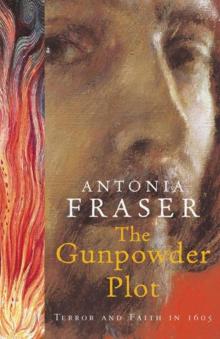 The Gunpowder Plot
The Gunpowder Plot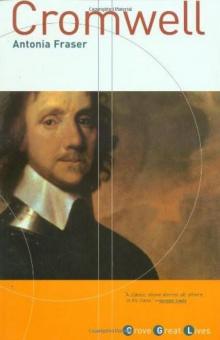 Cromwell
Cromwell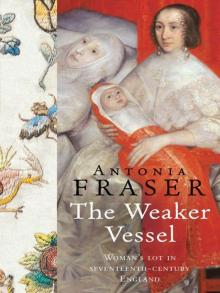 The Weaker Vessel: Women's Lot in Seventeenth-Century England
The Weaker Vessel: Women's Lot in Seventeenth-Century England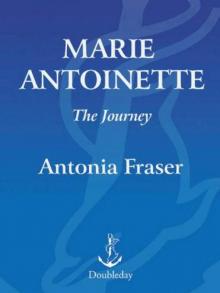 Marie Antoinette: The Journey
Marie Antoinette: The Journey Oxford Blood
Oxford Blood Your Royal Hostage
Your Royal Hostage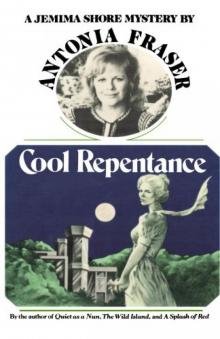 Cool Repentance
Cool Repentance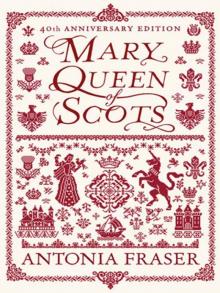 Mary Queen of Scots
Mary Queen of Scots Political Death
Political Death Royal Charles: Charles II and the Restoration
Royal Charles: Charles II and the Restoration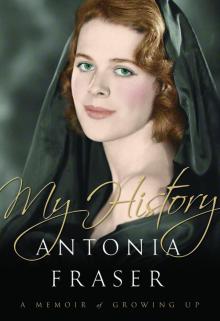 My History: A Memoir of Growing Up
My History: A Memoir of Growing Up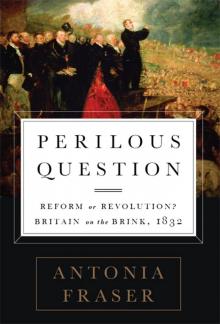 Perilous Question: Reform or Revolution? Britain on the Brink, 1832
Perilous Question: Reform or Revolution? Britain on the Brink, 1832 Jemima Shore at the Sunny Grave
Jemima Shore at the Sunny Grave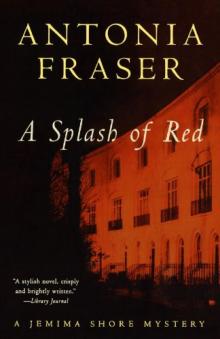 A Splash of Red
A Splash of Red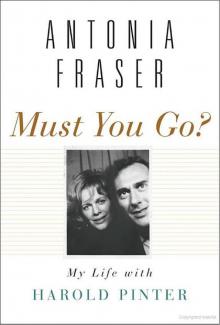 Must You Go?: My Life With Harold Pinter
Must You Go?: My Life With Harold Pinter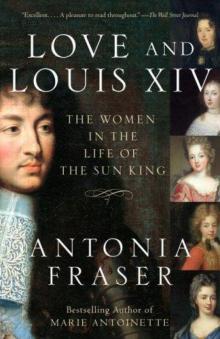 Love and Louis XIV: The Women in the Life of the Sun King
Love and Louis XIV: The Women in the Life of the Sun King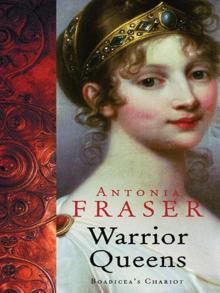 The Warrior Queens
The Warrior Queens The Wild Island
The Wild Island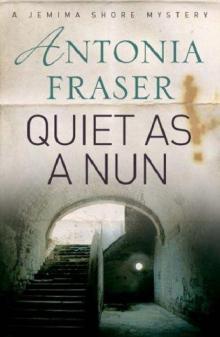 Quiet as a Nun
Quiet as a Nun Perilous Question
Perilous Question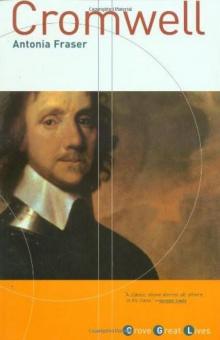 Cromwell, the Lord Protector
Cromwell, the Lord Protector Gunpowder Plots
Gunpowder Plots The Wild Island - Jemima Shore 02
The Wild Island - Jemima Shore 02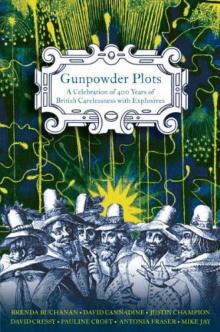 Gunpowder Plots: A Celebration of 400 Years of Bonfire Night
Gunpowder Plots: A Celebration of 400 Years of Bonfire Night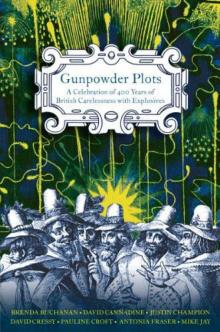 Gunpowder Plots_A Celebration of 400 Years of Bonfire Night
Gunpowder Plots_A Celebration of 400 Years of Bonfire Night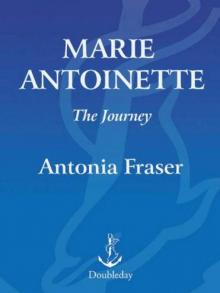 Marie Antoinette
Marie Antoinette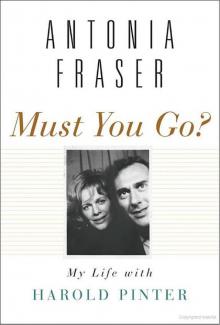 Must You Go?
Must You Go?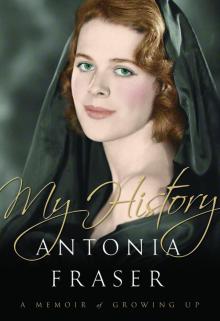 My History
My History